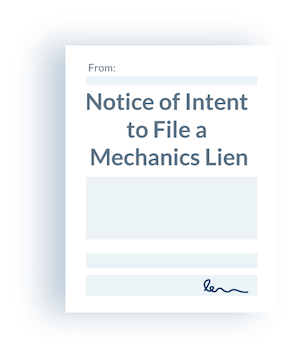
For more information, please see:
“Construction Notices 101: Preliminary Notice vs. Notice of Intent to Lien (NOI)“
What is a “Pre-Lien” anyway?
Most contractors, material suppliers, and other individuals involved in the construction industry have heard the term “Pre-Lien” before. In fact, they might think they have filed one before. Regardless of the state in which the contractors are located, the term “Pre-Lien” seems to be tossed around haphazardly.
The reality is, there is no uniform document entitled “Pre-Lien” that applies to all states and situations. For those who are doing business in multiple states, using the term “Pre-Lien” could get you in trouble if you are unsure of what type of document you need to file. That is why it is always best to know what type of document you need to file when the time comes.
If not a “Pre-Lien” then what is there?
Generally, there are two types of notices that come before filing a lien:
1. A Preliminary Notice, which gets sent at or near the beginning of a project. This document serves to notify the parties involved in the project that a particular company is performing work or delivering materials for a specific project. Alternate names for this type of notice can be Notice to Owner, Notice to Owner and Contractor, 20-Day Notice, Notice of Furnishing, and more. The key component is that it is sent at or near the beginning of work.
2. A Notice of Intent to Lien, which gets sent before the claimant make the final decision to file a lien. This document services as a warning (similar to a demand letter) that the claimant intends to file a lien if the dispute is not settled, or the invoice is not paid. While this notice is generally not required, it is required in some states, and can be an effective weapon to getting paid in all states.
What type of document do I need to file?
The lien life-cycle can be summed up in a few simple steps:
– Every time you start a new project, you should consider sending out a Preliminary Notice to let the other parties know you are going to work on the project, and to protect your lien rights.
– If you are paid, then you do not need to worry about the project any longer.
– If you have not been paid, you can consider sending a Notice of Intent to Lien to the individual or company that owes you money (be mindful that some states, like Colorado, require a Notice of Intent to Lien before filing a lien).
– Lastly, if you have sent the Preliminary Notice, you have sent the Notice of Intent to Lien, and you still haven’t gotten paid, it’ time a file a lien.
So, the next time you hear someone talking about a “Pre-Lien”, ask them if they know what specific type of document they actually want.




